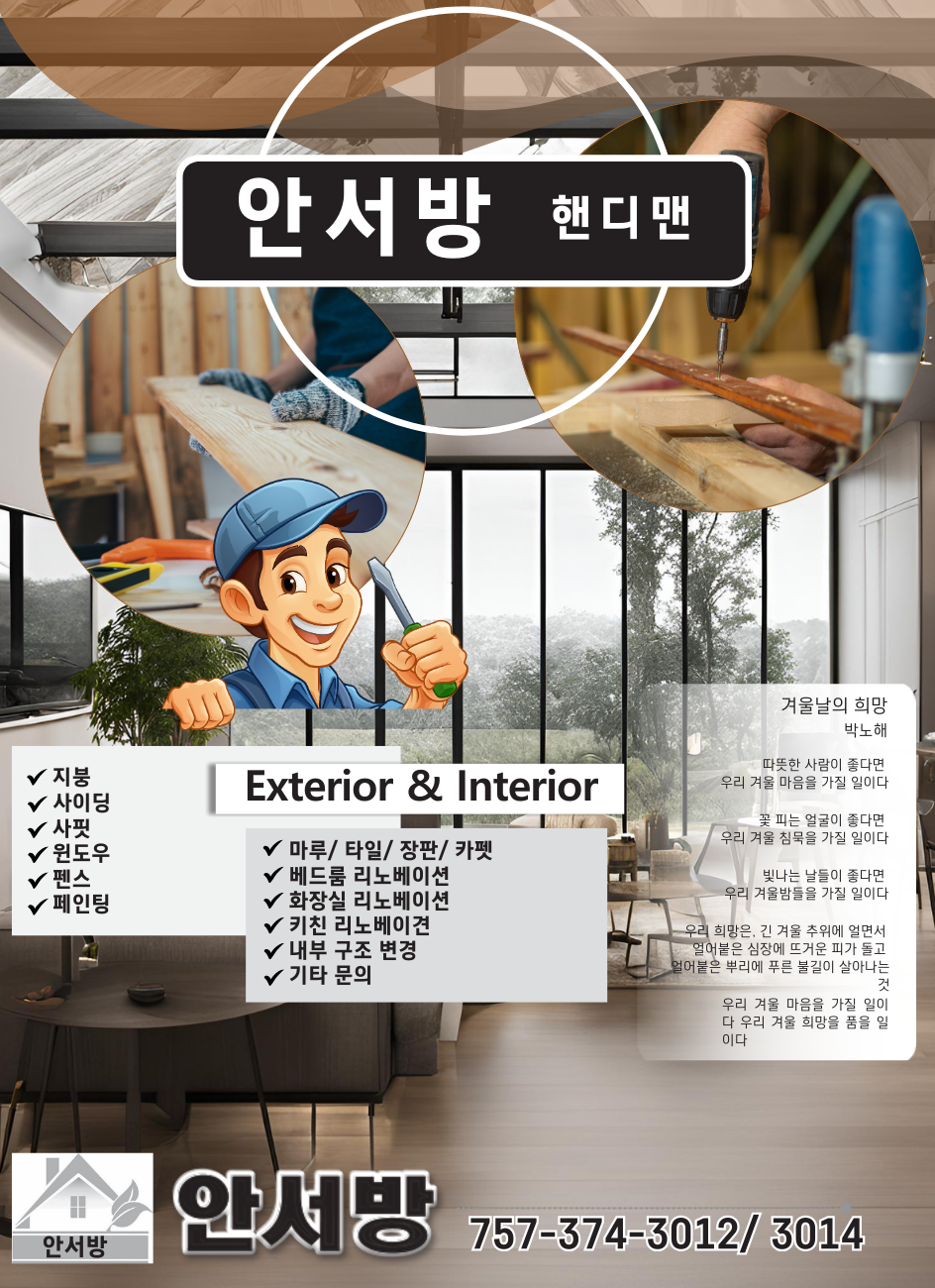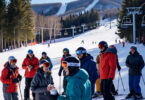VDOT가 추천하는 겨울철 비상 운전 키트 품목
겨울 날씨가 다가옴에 따라 VDOT은 운전자에게 비상용 겨울철 운전 키트를 준비할 것을 권장하는 권고문을 발표했습니다.
겨울철 운전 키트를 준비하는 것 외에도 VDOT은 운전자에게 겨울철 날씨에는 필수적이지 않은 여행을 피할 것을 권장하고있습니다. 또한 운전자는 운전하기 전에 차량의 타이어와 오일 수위를 점검하고 창문, 앞유리, 거울에 쌓인 얼음과 눈을 모두 제거해야 합니다.
VDOT는 겨울철 운전 키트에 다음 품목을 추가할 것을 권장합니다:
-손전등 및 여분의 배터리
-얼음 스크레이퍼
-휴대폰 및 충전기
-점퍼 케이블
-담요 또는 퀼트
-구급상자
-생수
-부패하지 않는 음식(견과류, 에너지바)
-견인용 연마재(고양이 깔개, 모래)
눈보라로 인해 자동차나 트럭에 갇힌 경우, VDOT는 다음 조치를 취할 것을 권장합니다:
-고속도로에서 차를 세웁니다. 비상등을 켜고 라디오 안테나나 창문에 조난 깃발을 매달아 두세요.
-구조대원에게 눈에 잘 띄도록 하세요:
-야간에 시동을 걸 때 돔 라이트를 켭니다.
-안테나나 문에 색깔이 있는 천(빨간색이 바람직)을 묶습니다.
-눈이 그치면 차량 후드를 올려 문제가 있음을 알립니다.
-구조대원이 발견할 가능성이 가장 높은 곳에 차량에 남아 있습니다. 대피할 수 있는 건물이 가까이 보이지 않는 한 걸어서 출발하지 마세요. 눈이 날리면 거리가 왜곡될 수 있으니 주의하세요. 건물이 가까워 보이지만 눈이 많이 내리면 걸어서 가기에는 너무 멀 수 있습니다.
-매시간 10분 정도 엔진과 히터를 가동하여 몸을 따뜻하게 유지합니다. 엔진이 작동 중일 때는 바람이 잘 통하는 창문을 살짝 열어 환기하세요. 이렇게 하면 일산화탄소 중독으로부터 보호할 수 있습니다. 주기적으로 배기관에서 눈을 치우세요.
-체온을 유지하기 위해 운동하되 과도한 운동은 피합니다. 팔, 다리, 손가락, 발가락을 격렬하게 움직여 혈액 순환을 유지하고 보온을 유지합니다.
-극심한 추위에는 단열을 위해 시트 커버와 바닥 매트를 사용합니다. 승객들과 함께 모여서 외투를 담요로 사용하세요.
-교대로 수면을 취하세요. 구조 대원을 찾기 위해 한 명은 항상 깨어 있어야 합니다.
-탈수를 방지하기 위해 수분을 섭취하세요.
-배터리 전원이 낭비되지 않도록 주의하세요. 조명, 난방, 라디오 사용 등 전기 에너지 사용량과 공급량의 균형을 유지합니다.
-야간에는 내부 조명을 켜서 작업 대원이나 구조대원이 자신을 볼 수 있도록 합니다.
-외딴 지역에 고립된 경우, 개방된 공간에 ‘HELP’ 또는 ‘SOS’라고 쓰인 큰 블록 글자를 바위나 나뭇가지에 붙여 비행기로 해당 지역을 조사할 수 있는 구조대원의 주의를 끌 수 있도록 합니다.
-폭풍이 지나가면 차에서 내려 필요한 경우 걸어서 이동합니다.
As winter weather encroaches, VDOT has issued an advisory encouraging drivers to be prepared with an emergency winter driving kit.
In addition to keeping a winter weather driving kit, VDOT recommends drivers avoid non-essential travel during winter weather. Drivers should also inspect their car’s tires and fluid levels and clear all ice and snow from windows, windshields and mirrors before driving.
VDOT recommends adding the following items to a winter weather driving kit:
- Flashlight and extra batteries
- Ice scraper
- Cell phone and charger
- Jumper cables
- Blankets or quilts
- First aid kit
- Bottled water
- Non-perishable food (nuts, energy bars)
- Abrasive material for traction (cat litter, sand)
- Shovel
If a blizzard traps you in your car or truck, VDOT recommends taking the following steps:
- Pull off the highway. Turn on hazard lights and hang a distress flag from the radio antenna or window.
- Make yourself visible to rescuers:
- Turn on the dome light at night when running the engine.
- Tie a colored cloth (preferably red) to your antenna or door.
- Raise the hood indicating trouble after snow stops falling.
- Remain in your vehicle where rescuers are most likely to find you. Do not set out on foot unless you can see a building close by where you know you can take shelter. Be careful; distances are distorted by blowing snow. A building may seem close, but could be too far to walk to in deep snow.
- Run the engine and heater for about 10 minutes each hour to keep warm. When the engine is running, open an upwind window slightly for ventilation. This will protect you from possible carbon monoxide poisoning. Periodically clear snow from the exhaust pipe.
- Exercise to maintain body heat, but avoid overexertion. Vigorously move your arms, legs, fingers and toes to keep blood circulating and to keep warm.
- In extreme cold, use seat covers, and floor mats for insulation. Huddle with passengers and use your coat for a blanket.
- Take turns sleeping. One person should be awake at all times to look for rescue crews.
- Drink fluids to avoid dehydration.
- Be careful not to waste battery power. Balance electrical energy needs – the use of lights, heat, and radio – with supply.
- Turn on the inside light at night so work crews or rescuers can see you.
- If stranded in a remote area, stomp large block letters in an open area spelling out HELP or SOS and line with rocks or tree limbs to attract the attention of rescue personnel who may be surveying the area by airplane.
- Leave the car and proceed on foot – if necessary – once the storm passes.








